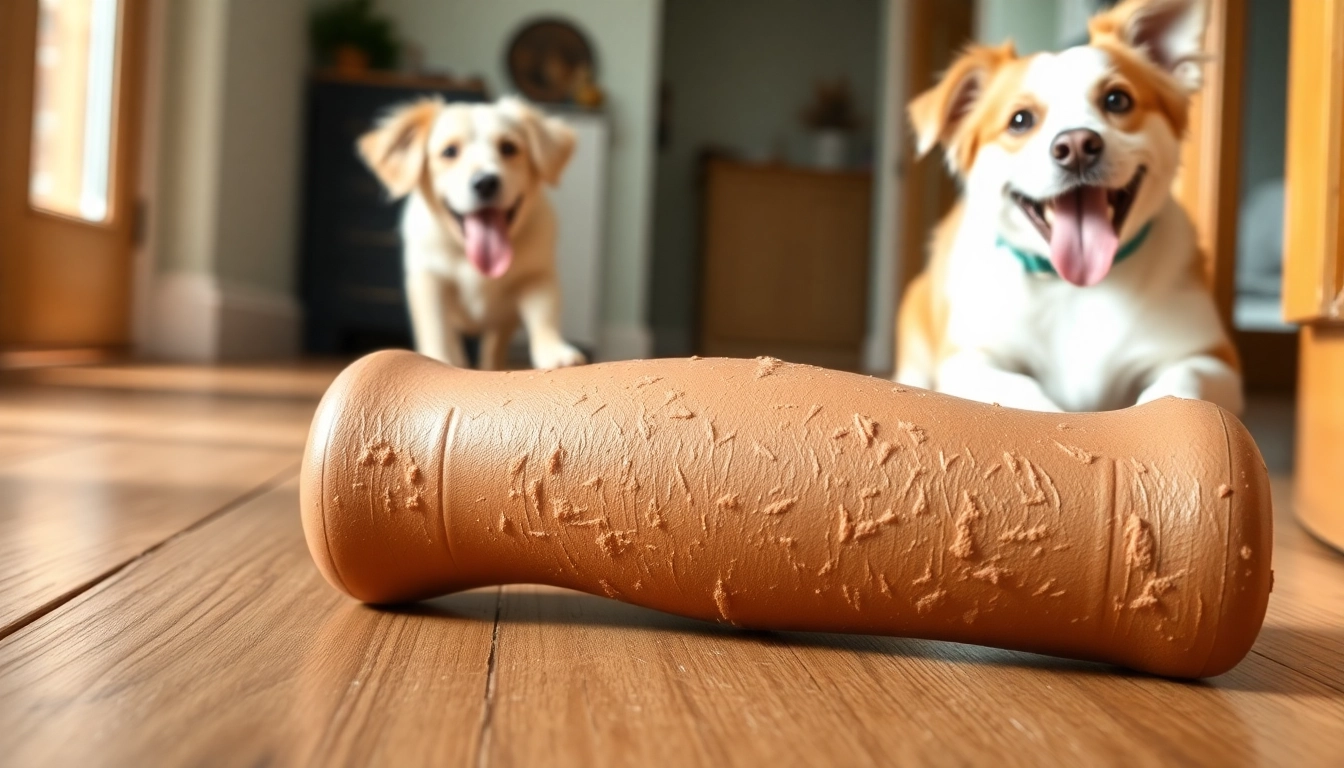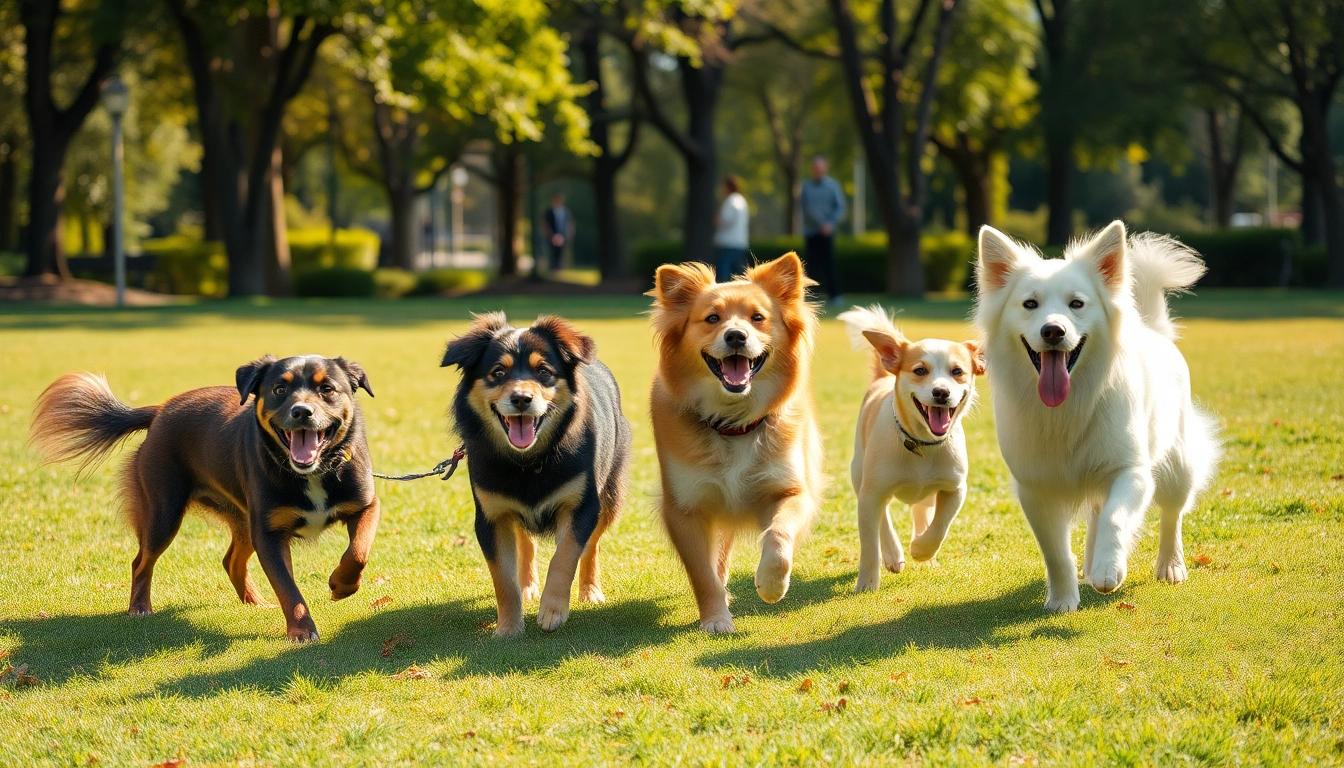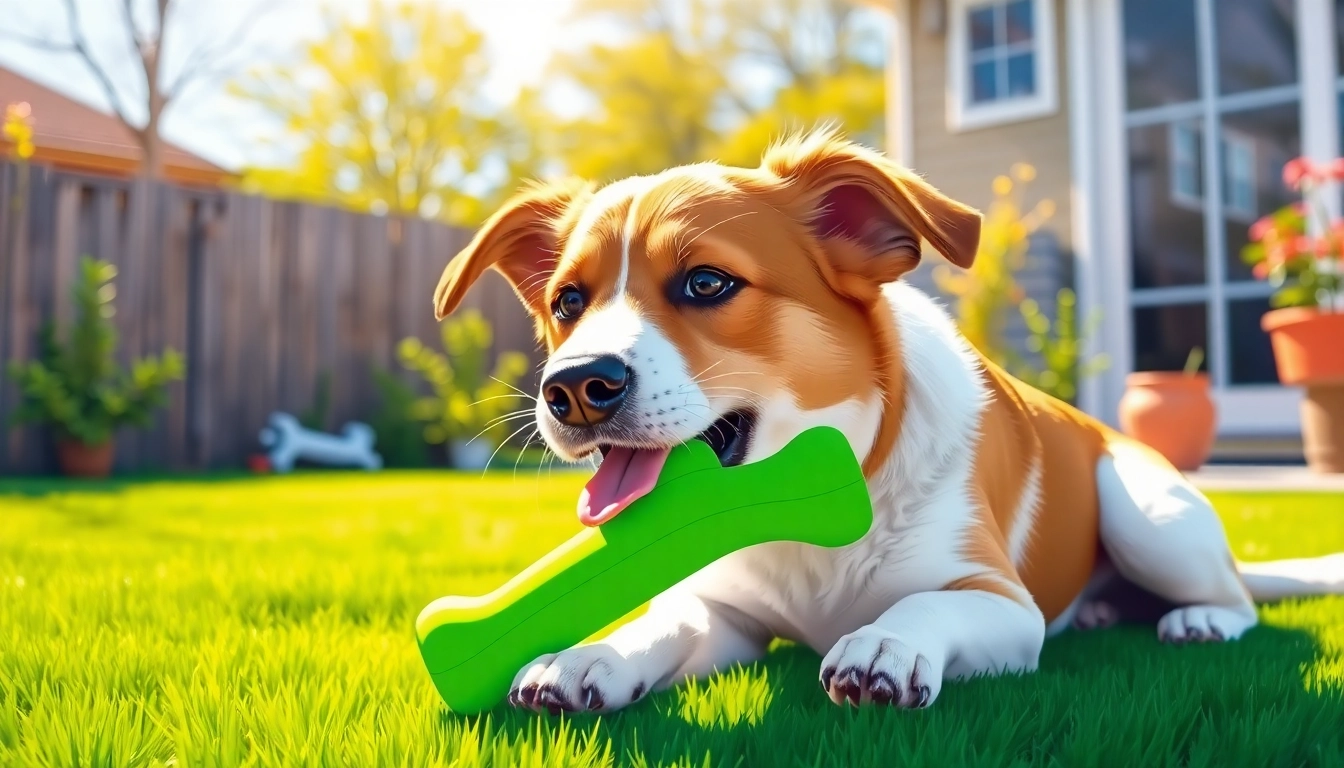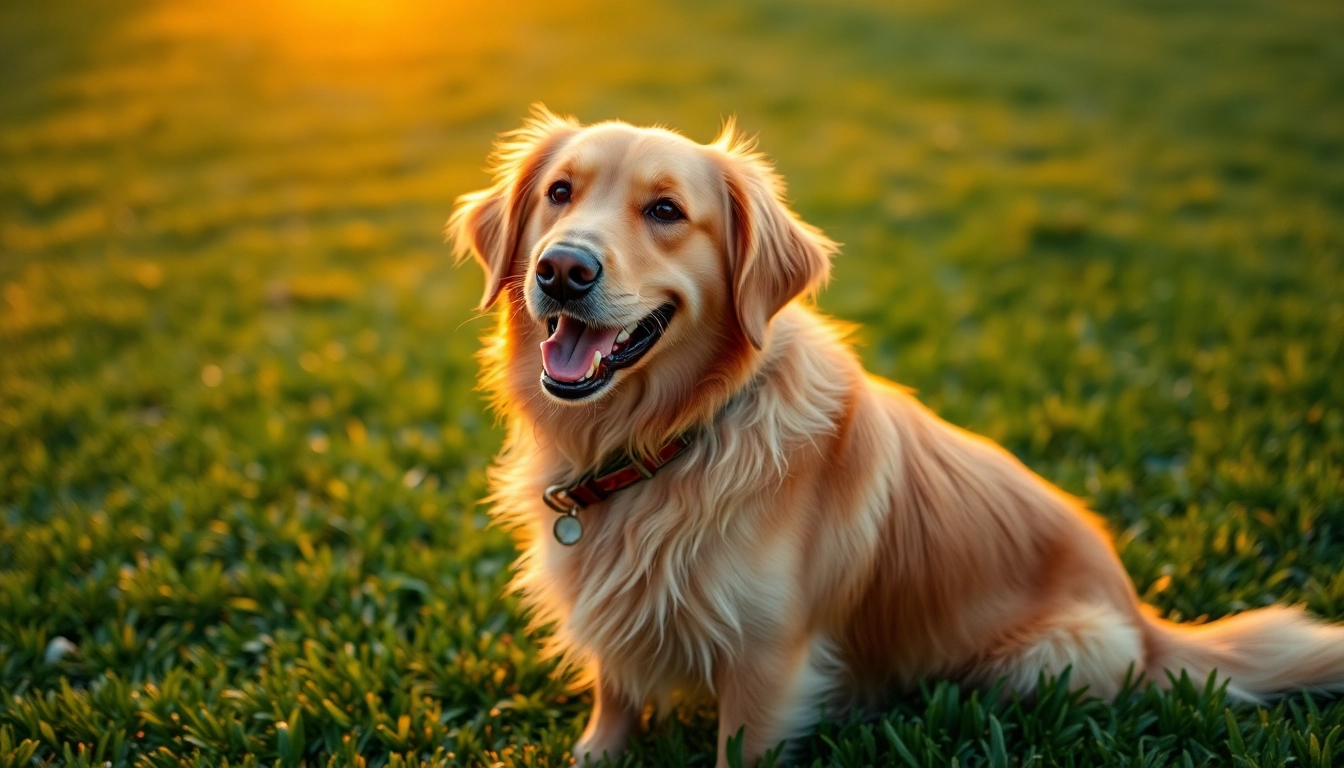Understanding Long-lasting Chew Toys
When it comes to keeping our furry friends happy, few things rival the excitement of a good chew toy. Among the plethora of options available, there stands one that often takes the lead: the long-lasting chew toy. These durable playthings are not just a source of entertainment; they also play a pivotal role in maintaining your dog’s dental health and alleviating boredom. In this article, we will delve deep into what makes a chew toy durable, the benefits they provide, and how to select the perfect one for your pup.
What Makes a Chew Toy Durable?
Durability in chew toys is determined by several factors, including materials, design, and manufacturing process. The best chew toys are made from robust materials like high-quality rubber or nylon that can withstand the vigorous chewing instincts of dogs.
Additionally, the design of the chew toy contributes significantly to its longevity. Toys that are thicker, have no complex components that can break easily, and are free from small detachable parts tend to last longer. A well-engineered chew toy distributes pressure evenly across its surface, reducing the risk of splits and tears, while innovative designs can also cover hard-to-reach areas within your dog’s mouth, providing effective cleaning.
Benefits of Long-lasting Chew Toys for Dogs
Choosing a long-lasting chew toy goes beyond just durability. These chew toys offer a variety of benefits:
- Dental Health: Chewing helps to reduce plaque and tartar buildup, promoting better oral hygiene.
- Improved Mental Stimulation: Chew toys can keep dogs entertained, preventing boredom and associated destructive behaviors.
- Physical Exercise: Playing with chew toys allows dogs to engage in physical activity, contributing to a healthy lifestyle.
- Stress Relief: The act of chewing can help relieve anxiety and stress, often calming an overactive or anxious pet.
How to Choose the Right Chew Toy
Selecting the right long-lasting chew toy depends on multiple factors, including your dog’s age, size, breed, and chewing habits. Here are some key considerations:
- Size: Ensure the toy is the appropriate size for your dog. A toy that’s too small can pose a choking hazard, while one that’s too big might not be engaging.
- Chewing Style: Identify whether your dog is a gentle nibbler or a aggressive chewer and select a toy that matches their style.
- Ingredient Safety: Always check that the materials used in the chew toys are safe for dogs. Look for non-toxic and eco-friendly options wherever possible.
Types of Long-lasting Chew Toys
Rubber vs. Nylon: Which is Better?
Rubber and nylon are two of the most popular materials for chew toys. But which one is better?
Rubber Chew Toys: Often made from natural rubber or synthetic variants, rubber chew toys tend to be more flexible and offer a satisfying chew without risking breakage. Their durability makes them ideal for aggressive chewers. Additionally, many rubber toys are designed to bounce, offering extra playtime opportunities.
Nylon Chew Toys: These toys usually last longer than rubber counterparts, especially for powerful chewers. However, they are more rigid and can sometimes be abrasive on a dog’s teeth. That said, many dogs gravitate towards the texture of nylon, finding it satisfying to gnaw on.
Ultimately, the choice depends on your dog’s preferences. You might even find that a combination approach—offering both rubber and nylon toys—encourages varied play behavior.
Eco-Friendly Options in Chew Toys
As pet owners become more conscious of environmental impacts, eco-friendly chew toys are gaining popularity. These toys are typically made from sustainable materials like hemp, organic cotton, or recycled plastics. Not only do they provide a safe and durable option for dogs, but they also contribute to reducing environmental waste. Look for certifications or labels indicating that a product is made from ethical sources.
Specialized Chew Toys for Different Breeds
Different dog breeds have different chewing habits and styles, making it essential to consider breed-specific chew toys:
- Small Breeds: For smaller dogs, lightweight and smaller-sized toys are ideal. These toys should be easy to carry and not pose a choking hazard.
- Large Breeds: Larger dogs require more robust toys that can withstand their strong jaws. Opt for thick, heavy-duty options designed for aggressive chewers.
- Specific Breeds: Some specialized toys cater to common traits in certain breeds, such as the strong jaw of a Pit Bull or the delicate bite of a Dachshund. Tailoring your choice improves safety and engagement.
How to Introduce a Chew Toy to Your Dog
Tips for Encouraging Play
Introducing a new chew toy to your dog can sometimes be a challenge. Here are effective strategies to ensure your pup embraces their new toy:
- Interactive Play: Engage with your dog by tossing the toy or playing tug-of-war to stimulate interest.
- Scent and Taste: Consider loading the toy with treats or using peanut butter to entice your pet. This combination elevates the toy’s appeal.
- Routine Integration: Incorporate the toy into regular playtime. Consistency will help your dog associate the toy with fun experiences.
Monitoring Your Dog’s Interaction with the Toy
Always supervise your dog, especially when introducing a new chew toy. Observing how they play with it can provide insights into their chewing habits and help you assess whether the toy is suitable. Look out for any signs of distress or difficulty with the toy, as this may indicate it’s not the right fit for them.
Common Mishaps and Solutions
Occasionally, complications can arise with chew toys, such as:
- Loss of Interest: If your dog loses interest, rotate the toys regularly to keep them novel and exciting.
- Potential Choking Hazards: Regularly check for any signs of wear and tear. Dispose of any toys that have become hazardous to prevent the risk of choking.
- Gastrointestinal Issues: If your dog swallows a piece of the toy, monitor them closely and consult your vet if any distress signs appear.
Maintaining Your Chew Toys
Cleaning Long-lasting Chew Toys Effectively
Regular cleaning is essential to ensure the longevity of chew toys and the health of your dog. Depending on the material, cleaning methods may vary:
- Rubber Toys: Wash in warm, soapy water and use a brush to remove debris. Rinse thoroughly and allow to dry completely.
- Nylon Toys: Many nylon toys are dishwasher-safe. Just place them on the top rack for an effective clean.
- Eco-Friendly Toys: Ensure cleaning products are pet-safe and adhere to any care instructions provided with the toy.
When to Replace a Chew Toy
Even the most durable chew toys will require replacement over time. Signs indicating it’s time for a new toy include:
- Visible tears or chunks missing
- Discoloration or changes in texture
- If your dog shows signs of difficulty chewing or resisting play
Signs of Wear and Tear to Watch For
Always keep an eye out for early signs of damage, which can include:
- Cracks or splits in the material
- Small pieces coming loose or breaking off
- Changes in your dog’s interest level, indicating discomfort or that the toy is no longer enticing
Enhancing Playtime with Chew Toys
Incorporating Chew Toys into Daily Routine
Establishing a routine for playtime not only reinforces the bond between you and your dog but also ensures they receive adequate mental and physical stimulation. Consider integrating chew toys into different aspects of your day:
- Use during training sessions as a reward
- Provide specific playtimes to help direct energy levels
- Rotate toys to keep your sessions fresh and exciting
Combining Chew Toys with Training Commands
Utilizing chew toys as a reward during training can enhance the learning experience. This method not only encourages desirable behaviors, but also conditions your dog to view the toy as a positive reinforcement tool. For example, having your dog sit or stay before receiving their chew toy can foster discipline while creating excitement about the play opportunity.
Engaging Your Dog with Interactive Chew Toys
Many chew toys come with built-in interactivity, such as those that dispense treats. Such toys not only engage your dog’s natural problem-solving instincts but also offer a rewarding challenge. Opt for toys that stimulate mental engagement, making them an integral part of playtime.



